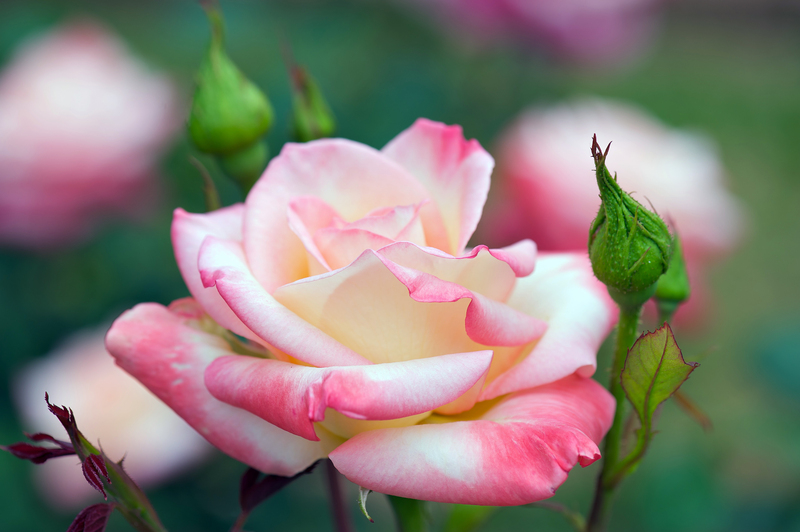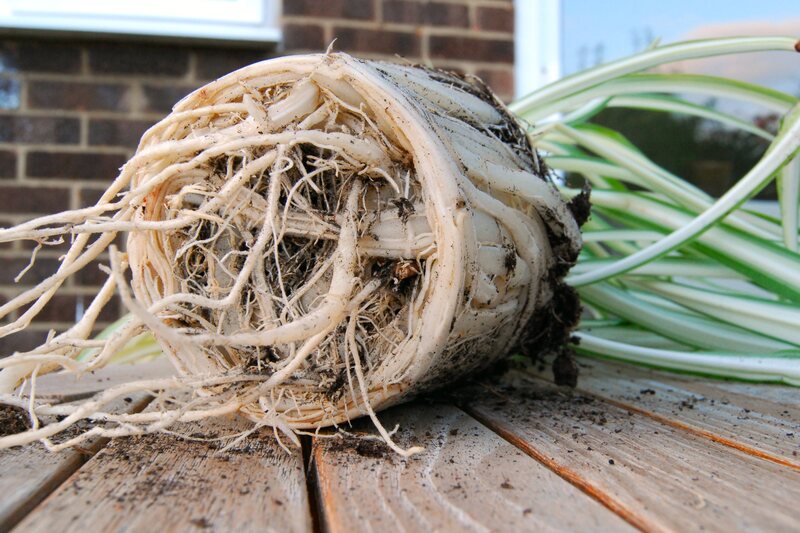Transform Your Space with Container Gardening
Posted on 01/06/2025
Transform Your Space with Container Gardening: A Comprehensive Guide
Container gardening is more than a trend--it's a revolution in how we bring nature into our homes, patios, and urban landscapes. Whether you have a luscious backyard, a modest balcony, or just a sunny windowsill, you can unlock the beauty and bounty of plants with the power of container gardening. In this guide, you'll discover creative strategies, practical tips, and inspirational ideas to transform your space with container gardening.

Why Choose Container Gardening?
Container gardening offers numerous benefits for both novice and experienced gardeners alike. Here's what makes it so appealing:
- Space-saving: Perfect for apartments, condos, and tight outdoor areas.
- Versatility: Move and rearrange your garden to suit the season or your mood.
- Pest and disease control: Isolating plants in containers reduces the spread of pests and diseases.
- Accessibility: Gardeners with limited mobility can raise container gardens for easier access.
- Control: Manage soil, water, sunlight, and nutrients more precisely.
- Decorative impact: Use colorful pots and creative arrangements to enhance your decor.
Who Can Benefit from Container Gardening?
Anyone can transform their space with container gardening--from busy city dwellers with no garden, to new gardeners who want a manageable project, to seasoned green thumbs looking to experiment. Even children can join in, making it a fun and educational family activity.
Getting Started with Container Gardens
Choosing the Right Container
Selecting the perfect pots for your container garden is crucial. Not only should your containers complement your style, but they also need to support plant health. Consider the following:
- Material: Terracotta, ceramic, plastic, metal, and wood all have pros and cons. Terracotta is classic, but dries quickly; plastic retains moisture but can heat up quickly in the sun; metal and wood add rustic charm but may rot or rust over time.
- Size: Choose containers large enough for roots to develop. Remember, bigger is often better for thirsty or large-rooted plants.
- Drainage: Ensure every container has adequate drainage holes. This is vital to prevent waterlogged roots, which can cause rot.
- Design: Use a mix of heights and shapes for visual interest in your container garden transformation.
Picking the Perfect Plants
The heart of every container garden transformation is its plants. Your choices depend on location, climate, and personal taste. Consider these plant categories:
- Herbs: Basil, parsley, mint, chives, rosemary--ideal for culinary flavor and fragrant delight.
- Vegetables: Tomatoes, peppers, lettuce, radishes, and beans thrive in pots.
- Flowers: Petunias, geraniums, pansies, marigolds, and impatiens add vibrant color.
- Succulents and cacti: Require minimal water and ideal for sunny, dry spots.
- Ornamental Grasses: Add texture and movement.
- Dwarf shrubs and trees: Lemon trees, olive trees, and Japanese maples create height and structure.
Mix and match for maximum effect, but ensure all plants in a container have similar light and water needs.
Designing Your Container Garden
Creative Arrangements and Themes
A container garden can be more than a few pots; it can become a living design statement. Use these design principles to make your garden stand out:
- Thriller, Filler, Spiller: The classic container combination--choose a bold central plant (thriller), surround it with bushy or mounding plants (filler), and add trailing plants that cascade over the sides (spiller).
- Color Coordination: Group plants with complementary colors for a harmonious look or bold contrasts for visual impact.
- Themed Gardens: Create a Mediterranean, butterfly-friendly, or edible garden by choosing plants with a specific theme.
- Vertical Gardening: Stack and hang containers to add dimension and maximize space.
- Seasonal Displays: Swap out plants as seasons change for year-round beauty.
Location and Light
Assess your space's sunlight. South or west-facing locations get the most light, making them perfect for sun-lovers like tomatoes and zinnias. Partial shade is best for ferns and impatiens. Match your plants to your light conditions for guaranteed success!
Best Practices for Container Gardening Success
Soil and Fertilizer
Container gardening requires the right soil. Never use garden soil: it's too dense and can harbor pests. Instead:
- Potting mix: Use a high-quality, well-draining potting mix. Many include slow-release fertilizers and water-retaining crystals.
- Compost: Mix in organic compost for extra nutrients.
- Fertilize regularly: Container plants exhaust soil nutrients faster. Use a balanced, water-soluble fertilizer every two to four weeks during the growing season.
Watering Strategies
Water needs vary by plant and climate, but as a rule, containers dry out faster than garden beds. *Check soil moisture daily during hot spells.*
- Consistency is key: Water deeply so roots grow downward.
- Morning is best: Water in the morning to minimize fungal diseases.
- Mulch: Add a layer of mulch to retain moisture and suppress weeds.
- Self-watering containers: Consider using self-watering pots if you travel or have a busy lifestyle.
Pest and Disease Management
Container gardens are less prone to pests, but problems can still arise. Remember to:
- Inspect plants regularly: Check for yellowing leaves, holes, or sticky residue.
- Use organic pest control: Neem oil, insecticidal soap, and hand-picking are effective and eco-friendly.
- Remove dead leaves: Prune and clean regularly to prevent disease spread.
- Rotate crops: If you grow edibles, change plant types seasonally to limit pests.
Ideas to Transform Your Space with Container Gardening
Small Spaces, Big Impact
You don't need acres to make a stunning statement. Here are creative ways to transform small spaces with container gardens:
- Vertical gardens: Use wall-mounted planters or hanging baskets.
- Multi-level displays: Place pots on plant stands, shelves, or ladders for height and depth.
- Tabletop oasis: Cluster mini succulents or herbs on your kitchen counter or dining table.
- Railings and windowsills: Install boxes or troughs on balcony rails or windowsills for lush color and privacy.
Container Vegetable Gardening
There's satisfaction in growing your own food, even in a small urban setting. Container vegetable gardening allows you to enjoy fresh produce all season. Try these tips:
- Grow tomatoes, peppers, lettuce, and radishes--all thrive in pots.
- Use deep containers for root crops like carrots and potatoes.
- Combine herbs and veggies for beautiful mixed edible containers.
Container Gardening for Outdoor Living
Spruce up patios, porches, or even driveways with clusters of containers. Large, bold pots filled with flowering shrubs, tall grasses, or even small trees can create privacy and visual boundaries. String fairy lights around pots for magical evening ambiance!
Container Gardening Tips for Beginners
- Start simple: Begin with easy-care plants like herbs or succulents.
- Group by needs: Cluster plants with similar watering and light preferences.
- Avoid overcrowding: Give each plant enough room to grow for healthy, lush containers.
- Label plants: Especially when growing multiple herbs or vegetables.
- Experiment! Don't be afraid to try bold colors, unique pot designs, or uncommon plant combinations.
Common Mistakes to Avoid
- Overwatering: The #1 cause of container plant failure. Always check soil before watering.
- Under-potting: Roots need space to grow. Use appropriately sized containers.
- Improper drainage: Waterlogged containers can kill plants--ensure strong drainage.
- Ignoring sunlight needs: Match plant varieties carefully to your space's light conditions.
- Neglecting feeding: Regular fertilizer is essential for thriving container plants.
Enhancing Curb Appeal with Container Gardening
A well-designed container garden can instantly boost the curb appeal of your home. Place vibrant planters by your entry, flank walkways, or highlight a patio. Use bold colors for impact or cool tones for tranquility. Switch arrangements seasonally for ever-changing charm.
Container Gardening for Every Season
You can enjoy container gardens year-round!
- Spring: Plant pansies, daffodils, and tulips.
- Summer: Go bold with geraniums, petunias, and ornamental grasses.
- Fall: Switch to mums, cabbages, and kale for rich autumn hues.
- Winter: Use evergreen shrubs, holly, and even painted branches or lights for holiday cheer.

Eco-Friendly Container Gardening
Container gardening can be a sustainable and environmentally friendly hobby with a few simple steps:
- Reuse and upcycle containers--think old buckets, tin cans, or wooden crates.
- Collect rainwater for irrigation.
- Use organic soil and natural fertilizers.
- Grow native and pollinator-friendly plants.
Conclusion: Transform Your Space Today with Container Gardening
Container gardening is one of the most rewarding, accessible, and creative ways to enhance any space--indoors or out. With limitless options for plant types, container styles, and design themes, you can personalize and transform your environment beautifully and sustainably. Whether you're seeking a lush oasis on your balcony, a productive vegetable garden on your patio, or a pop of color by your front door, container gardening empowers you to make the most of your space.
Start small, dream big, and let your container garden tell your unique story. Soon, you'll not only have a stunning display but also a meditative, fulfilling hobby that brings beauty and wellness right to your doorstep.
Further Resources
- "The Spruce: Container Gardening 101"
- University Extension Gardening Guides
- Local garden centers--they often hold workshops and offer local tips!
*Let your imagination bloom, and transform your space with container gardening today!*

